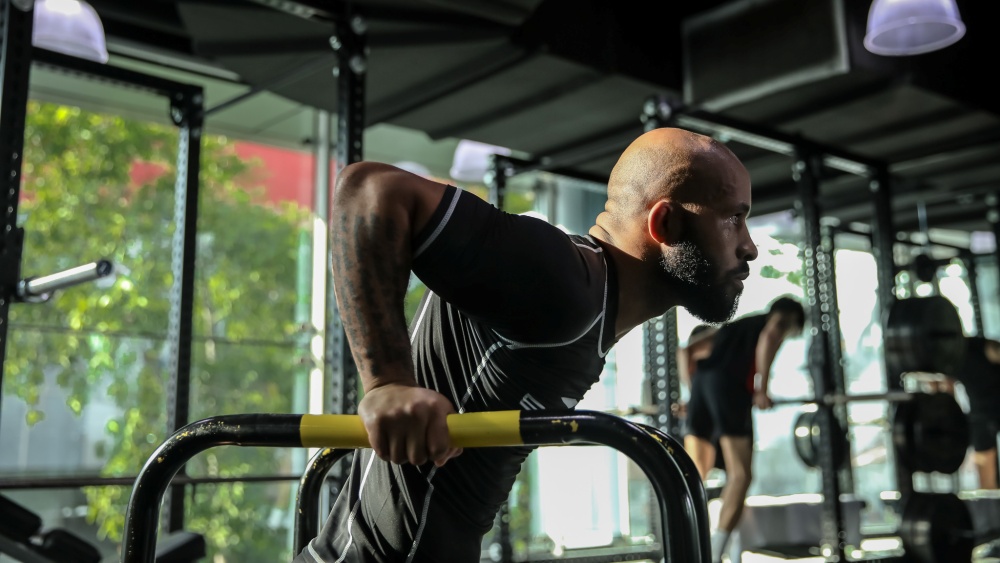Kegel exercises strengthen muscles in your pelvic floor (pubococcygeal or PC muscles). They are typically simple clench-and-release exercises anyone can perform. The term “pelvic floor” refers to a cluster of tissues and muscles that form a hammock at the bottom of the pelvis. This sling keeps organs around it in place. A weakened pelvic floor often leads to issues like difficulty controlling your bladder or bowels. The muscles in the pelvic floor also promote sexual function.
Kegel exercises help to strengthen muscles in your pelvis floor, improving your bowel and bladder control. Once you understand how Kegel exercises work, you’ll be able to perform them anytime and anywhere.
Men and women can both benefit from performing Kegel exercises. Some of the factors that can weaken a woman’s pelvic floor include weight gain, aging, pregnancy, and childbirth. A woman’s pelvic floor supports her bowels, bladder, and womb. These organs sometimes lower the vagina when the pelvic floor weakens, leading to urinary incontinence.
The aging process is the main factor that weakens a man’s pelvic floor. It can lead to fecal and urinary incontinence, particularly if the person has had prostate surgery.
Strengthening Your Pelvic Floor With Kegel Exercises
Finding the right set of muscles to target can be tricky when you’re new to Kegel exercises. A simple way for women to locate these muscles is by inserting a clean finger into the vagina and tightening the vaginal muscles around the finger.
The pelvic floor muscles can also be located by trying to stop urine flow mid-way through urination. The muscles you use to stop the flow of urine are your pelvic floor muscles, so familiarize yourself with how they feel when you relax and contract them.
We should mention that stopping the flow of urine isn’t something you should do regularly, and you should also avoid performing Kegel exercises on a full bladder. Not completely emptying your bladder when urinating increases your risk of urinary tract infections.
Women who have difficulty locating their pelvic floor should ask a gynecologist for assistance. At times, a tool named a vaginal cone can be used to pinpoint PC muscles. Biofeedback training is another tool that can help isolate a person’s pelvic floor. During the procedure, adhesive electrodes or a small probe are inserted into the vagina or anus. The patient is then asked to perform Kegel exercises while a monitor shows if the correct muscles were contracted and how long the contraction was held.
Men are also just as likely to have difficulty finding their pelvic floors. An easy way for men to locate the correct group of muscles in the pelvic floor is by inserting a clean finger into their rectum and trying to squeeze it with their pelvic floor muscles without tightening their thighs, buttocks, or abdomen.
Another way to pinpoint the muscles you should perform Kegel exercises with is by tensing the muscles that prevent you from passing gas. Biofeedback training can also be used to help men locate muscles in their pelvic floor.
Benefits Of Kegel Exercises
As a general rule, you should always empty your bladder before performing Kegel exercises. Find a private, quiet place to lie down or sit down while performing your exercises. You’ll quickly realize you can perform Kegel exercises from anywhere once you build up some experience.
Beginners should focus on tightening the muscles in their pelvic floor for three seconds and relaxing them for the same amount of time. Aim for about ten reps when doing this. With practice, you should be able to tense your pelvic muscles for up to ten seconds at a time. Aim to perform three sets of ten reps each when performing Kegel exercises.
It might take a few weeks to see noticeable improvements, so don’t be discouraged if your Kegel exercises don’t show results immediately. Studies show that regular Kegel exercises can take up to three months to affect urinary or bowel incontinence. Kegel exercises also tend to work differently for people. Some people develop significant improvements in urinary continence and muscle control, while others only report limited improvement. However, Kegel exercises help to prevent issues like urinary incontinence from worsening.
The key to getting the most out of Kegel exercises is using only muscles in your pelvic floor. Some people engage muscles in their backs and abdomen when performing Kegel exercises which can lead to pain after their sessions. Remember to keep the muscles in your sides, buttocks, back, and abdomen relaxed and loose when performing Kegel exercises.
Avoid overdoing Kegel exercises since that can fatigue muscles in the pelvic floor, preventing them from performing their role.
How Your Pubococcygeal Muscles Change Over Time
The PC muscles are typically strong and taut when you’re young, but they become stretched out and weakened as you age. Life events like pregnancy, childbirth, prostate surgery, bowel, or bladder problems can also worsen these issues.
Weakened PC muscles will impact your sex life and bladder control. Fortunately, in the same way you can strengthen muscles like your biceps with regular exercise, you can also do the same for your PC muscles by performing Kegel exercises.
Kegel exercises were developed in the 1940s to help restore women’s bladder control after childbirth. Nowadays, Kegels treat various conditions in women like urinary continence, sexual dysfunction, and pelvic organ prolapse.
There has been less research conducted on the benefits of Kegel exercises for men, but there are indications that it improves sexual performance and reduces the effects of overactive bladders. Kegel exercises also help to treat stress incontinence in men following prostate surgery.
Women and men both enjoy sexual benefits from performing Kegel exercises. Studies also indicate that PC muscle training improves sexual function in women. PC exercises improve erections, orgasm intensity, and ejaculation control in men. This is particularly true for men who have previously dealt with pelvic issues.
Factors that can lead to muscles in the pelvic floor becoming weak include:
- Weight gain or being overweight
- Pregnancy and vaginal births
- Surgeries conducted around the pelvic area, like prostate surgery and cesarean sections
- Genetics. Some people are born with a higher likelihood of developing issues that weaken tissues that support PC muscles
- Muscles in the anus, rectum and pelvic floor become weaker as you age. Reduced estrogen production caused by menopause also increases this risk
- Intense laughing, coughing, and sneezing can also weaken muscles in the pelvic floor
- Exercises like running, jumping, and contact sports that are hard on the body can weaken muscles in the pelvic floor
- Chronic medical issues like type 2 diabetes
- Chronic pelvic pain
- An overactive bladder
- Chron’s disease
- Ulcerative colitis
- Inflammatory bowel disease
Making Kegel Exercises Part Of Your Routine
The first step to incorporating Kegel exercises into your lifestyle is identifying your PC muscles to ensure you’re contracting them when performing exercises. You can use any of the exercises we discussed earlier, like holding your urine back when peeing, to locate your pelvic floor muscles. These are the same muscles you use to control passing gas. Men can visually confirm they’re contracting their PC muscles by observing their testicles to see if they rise.
Once you’ve identified your PC muscles, working them out is as simple as contracting them for a few seconds and allowing them to relax for the same amount of time. Aim to get 10 to 20 reps when performing Kegel exercises, and aim for three to four sets spread throughout the day. Try not to hold your breath when performing these exercises, and keep muscles like your glutes, abs, and thighs relaxed while performing Kegels. You only want to contract the muscles in your pelvic floor.
Gradually increase the length of time you contract your pelvic floor when performing Kegel exercises and increase your number of reps. Over time, these basic Kegel exercises will lead to better sexual performance and improved bladder control.
Try varying how you perform your Kegel exercises to give your PC muscles different types of workouts. For example, instead of slowly contracting your pelvic floor muscles for a fixed length of time, you can contract your PC muscles in quick succession. You can also play with your position when performing your exercises. You can perform Kegel exercises when laying down, sitting, or standing. This targets your PC muscles from different angles, helping to strengthen them.
Kegel exercises are low-risk, and they can be performed virtually anywhere. You can perform Kegel exercises while riding the bus, lying on the couch, or waiting in line at the store. Make it a habit to perform these exercises a few times daily, and you’ll get to enjoy benefits like improved bladder control, improved erections, lower odds of premature ejaculation, lower risk of urinary incontinence, lower risk of pelvic organ prolapse, and improved sexual function.
A doctor might recommend bladder training treatments or medication to complement Kegel exercises if you already have existing health issues due to a weakened or stretched-out pelvic floor. The key to enjoying the benefits of Kegel exercises is making it a part of your lifestyle the same way you make working out other parts of your body part of your routine.
You may also like:

















